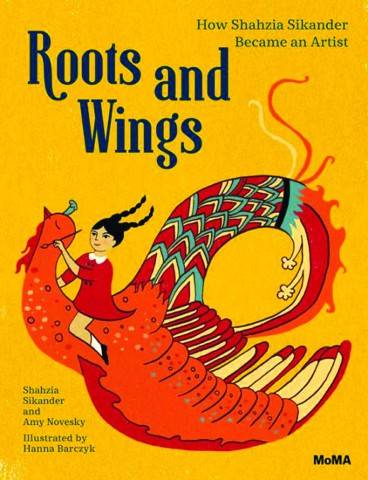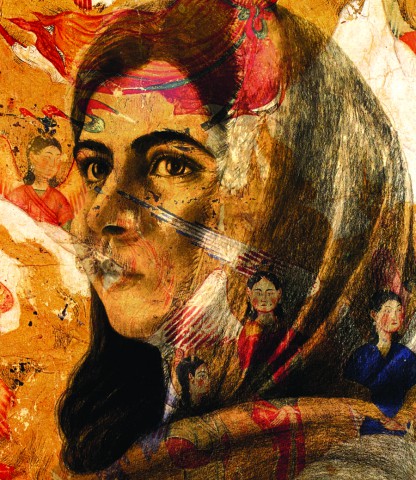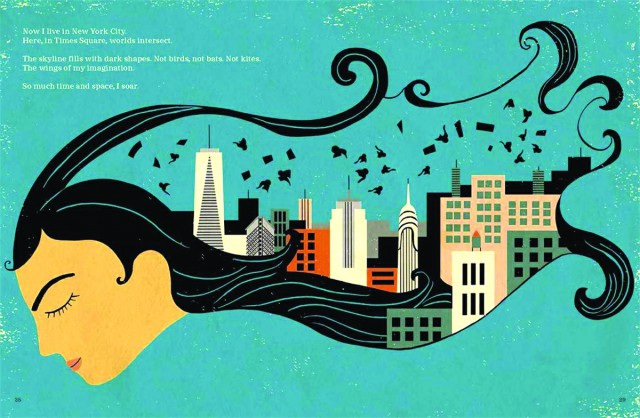
This week’s tragic killing of a Muslim family in a hate crime in Canada was followed by a number of Muslim figures speaking about representation – including a notable intervention by actor Riz Ahmed on how difficult it is to be the Other and how can we survive the toxicity of navigating the world where we live in, where people are always cast as the Other. There is always the Other – be it a foreigner, an immigrant, someone from another sect or religion, gender, class etc. The list goes on but what does not change is the assumption that the Other is to be distrusted, belongs to another value system and is not “one of us” so does not deserve our respect.
I have often wondered why it isn’t the other way – why are we drawn to differences rather than similarities? Why do we keep keen to cast aside others without empathy or regard? As they say in China, the loudest duck gets shot. So do we keep taking potshots at those who we feel are succeeding?
Stories make a powerful reason to change the narrative, as does representation. It is important to see figures as the norm, rather than an exception when people do well.

Stories do matter. Consider, for instance, the story of a girl shot in the head for essentially wanting to go to school. She goes on to survive and become an advocate for girls’ education. Her books are available and taught in elementary schools as examples of girls’ empowerment.
Malala receives hate and is often trolled in Pakistan as she is meant to represent a symbol of Western education. Why do we find it hard to accept that her survival and achievements also reflect well for other Pakistanis, particularly girls and women?
Foreign friends have often been confused when they explore why we would hate our own figures. Is it misogyny, rebellion against the West or misinformation? And how is that different from, for instance, an American fearing Obama because of his Muslim middle name? We have much to learn about empathy and humanity, particularly when one sees some of the public trolling and social media discourse.
Stories matter as they can change the narrative. Representation matters as we see ourselves and the potential of what we can become.
I attended a very interesting talk recently about creative people that had performed well – though did not engage with this part of their lives until they had reached middle age. Again misconception plays a role – that we are fully formed as adults and only learn as children. The main assumption is that adults are beyond learning. In reality, we are capable of learning at any age. Research has indicated that those who are in learning mode as adults actually hold onto language, memory and other aspects much more strongly than those who don’t. Eleanor Roosevelt comes to mind but so do others – for instance, Julia Child, who started cooking in her 40s and did not launch her now infamous cooking show until she was 50. The most compelling example was Grandma Moses who began painting in her 70s to great critical acclaim: completing a 20-year career well into her 90s!

This is clearly comforting to me as I approach middle age with trepidation – that we can learn and grow in many ways at any age. The proof is in Claudia Kalb’s new book Spark: How Genius Ignites, From Child Prodigies to Late Bloomers. Even Peter Mark Roget, the writer of Roget’s Thesaurus, first published when he was in his 70s. They could do this as they were not limited by the belief that creativity lies with a few or that one has to follow in the footsteps of others or that one can’t reinvent oneself as an adult or even senior citizen.
We have to be taught to lean into this creativity that exists in all of us – which is why I was particularly excited to read Shahzia Sikander’s latest work Roots and Wings: How Shahzia Sikander Became an Artist. This is part of the Art Talk Series in MoMa which has profiled multiple artists like the Japanese Yayoi Kusama.
The book is fascinating on several counts as it profiles Sikander’s journey growing up as a young girl in Lahore, her immigration to the US and her unusual journey as a Pakistani-American artist navigating the boundaries of art, identity and culture over a prolific twenty-year career. Roots and Wings is a deeply personal story about how an artist grows. It is based on the childhood of Shahzia Sikander, one of the most exciting and celebrated artists working today.

I remember watching with amazement and awe twenty years ago when she was the first South Asian artist to exhibit solo at the Smithsonian. I feel it is so important for young girls – whether growing up as my sixteen-year-old daughter in DC or a sixteen-year-old aspiring artist in Lahore – that journeys and careers like this are possible. And moreover, that such journeys are not the exception but well within the realms of imagination and possibility for Pakistani women.
A few years ago, I was part of a panel on the future of finance and digitalization at MIT in Boston. Like most panels that I participate in, I was the only woman on stage and did not even notice that, as it is such a routine part of my professional life. After the talk, there was a long line of Asian girls – thrilled as I had spoken about China and India and Pakistan. In a world of fintech, where even in the US only 3% of financing goes to women, they felt invisible. Visual representation matters: seeing someone like them up on a stage mattered. In return, I was suddenly aware that even on a small scale, one can be a role model for younger women and girls. It is important for us to feel that one of us is being seen by the world – whether as a woman, as a Pakistani, a professional or whatever we may aspire to.
Sikander talks of how art is how we learn to tell stories about our truths and how we negotiate a place in the world for future generations. I want for our daughters to have these positive role models in place in every sphere – whether education, art, physics or politics – standing strongly on their own two feet. Like Malala or Sikander, their excellence comes from their strong roots in Pakistan – using identity and a sense of history to be uniquely themselves in the larger world. Each of us is an ambassador for where we come from and what we aspire to, whether others like it or not.
We would be best placed to change our own stories – as Pakistanis, Muslims, abroad or in Pakistan – and to remember the best of our positive stories. For without strong roots and a sense of strong identity and culture, how can we soar and fly?
I have often wondered why it isn’t the other way – why are we drawn to differences rather than similarities? Why do we keep keen to cast aside others without empathy or regard? As they say in China, the loudest duck gets shot. So do we keep taking potshots at those who we feel are succeeding?
Stories make a powerful reason to change the narrative, as does representation. It is important to see figures as the norm, rather than an exception when people do well.

Stories do matter. Consider, for instance, the story of a girl shot in the head for essentially wanting to go to school. She goes on to survive and become an advocate for girls’ education. Her books are available and taught in elementary schools as examples of girls’ empowerment.
Malala receives hate and is often trolled in Pakistan as she is meant to represent a symbol of Western education. Why do we find it hard to accept that her survival and achievements also reflect well for other Pakistanis, particularly girls and women?
Foreign friends have often been confused when they explore why we would hate our own figures. Is it misogyny, rebellion against the West or misinformation? And how is that different from, for instance, an American fearing Obama because of his Muslim middle name? We have much to learn about empathy and humanity, particularly when one sees some of the public trolling and social media discourse.
Foreign friends have often been confused when they explore why we would hate our own figures. Is it misogyny, rebellion against the West or misinformation? And how is that different from, for instance, an American fearing Obama because of his Muslim middle name?
Stories matter as they can change the narrative. Representation matters as we see ourselves and the potential of what we can become.
I attended a very interesting talk recently about creative people that had performed well – though did not engage with this part of their lives until they had reached middle age. Again misconception plays a role – that we are fully formed as adults and only learn as children. The main assumption is that adults are beyond learning. In reality, we are capable of learning at any age. Research has indicated that those who are in learning mode as adults actually hold onto language, memory and other aspects much more strongly than those who don’t. Eleanor Roosevelt comes to mind but so do others – for instance, Julia Child, who started cooking in her 40s and did not launch her now infamous cooking show until she was 50. The most compelling example was Grandma Moses who began painting in her 70s to great critical acclaim: completing a 20-year career well into her 90s!

This is clearly comforting to me as I approach middle age with trepidation – that we can learn and grow in many ways at any age. The proof is in Claudia Kalb’s new book Spark: How Genius Ignites, From Child Prodigies to Late Bloomers. Even Peter Mark Roget, the writer of Roget’s Thesaurus, first published when he was in his 70s. They could do this as they were not limited by the belief that creativity lies with a few or that one has to follow in the footsteps of others or that one can’t reinvent oneself as an adult or even senior citizen.
We have to be taught to lean into this creativity that exists in all of us – which is why I was particularly excited to read Shahzia Sikander’s latest work Roots and Wings: How Shahzia Sikander Became an Artist. This is part of the Art Talk Series in MoMa which has profiled multiple artists like the Japanese Yayoi Kusama.
The book is fascinating on several counts as it profiles Sikander’s journey growing up as a young girl in Lahore, her immigration to the US and her unusual journey as a Pakistani-American artist navigating the boundaries of art, identity and culture over a prolific twenty-year career. Roots and Wings is a deeply personal story about how an artist grows. It is based on the childhood of Shahzia Sikander, one of the most exciting and celebrated artists working today.

I remember watching with amazement and awe twenty years ago when she was the first South Asian artist to exhibit solo at the Smithsonian. I feel it is so important for young girls – whether growing up as my sixteen-year-old daughter in DC or a sixteen-year-old aspiring artist in Lahore – that journeys and careers like this are possible. And moreover, that such journeys are not the exception but well within the realms of imagination and possibility for Pakistani women.
A few years ago, I was part of a panel on the future of finance and digitalization at MIT in Boston. Like most panels that I participate in, I was the only woman on stage and did not even notice that, as it is such a routine part of my professional life. After the talk, there was a long line of Asian girls – thrilled as I had spoken about China and India and Pakistan. In a world of fintech, where even in the US only 3% of financing goes to women, they felt invisible. Visual representation matters: seeing someone like them up on a stage mattered. In return, I was suddenly aware that even on a small scale, one can be a role model for younger women and girls. It is important for us to feel that one of us is being seen by the world – whether as a woman, as a Pakistani, a professional or whatever we may aspire to.
Sikander talks of how art is how we learn to tell stories about our truths and how we negotiate a place in the world for future generations. I want for our daughters to have these positive role models in place in every sphere – whether education, art, physics or politics – standing strongly on their own two feet. Like Malala or Sikander, their excellence comes from their strong roots in Pakistan – using identity and a sense of history to be uniquely themselves in the larger world. Each of us is an ambassador for where we come from and what we aspire to, whether others like it or not.
We would be best placed to change our own stories – as Pakistanis, Muslims, abroad or in Pakistan – and to remember the best of our positive stories. For without strong roots and a sense of strong identity and culture, how can we soar and fly?

